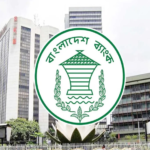The 2024 general elections in India, held between April 19 and June 1, have produced one of the most dynamic and closely watched outcomes in recent political history. This election cycle, marked by high voter engagement and significant political shifts, has set the stage for a new era in Indian politics. Here, we delve into the details of the election results, exploring the performance of major political parties, key states, and the implications for India’s future.
Overview of the 2024 General Elections
The 2024 elections were historic, both in terms of scale and participation. Over 968 million people were eligible to vote, with an impressive turnout of 642 million voters, including 312 million women, the highest ever participation by women in Indian elections. The elections were conducted across seven phases, reflecting the logistical complexities of managing the world’s largest democracy.
The National Picture
The Bharatiya Janata Party (BJP), led by Prime Minister Narendra Modi, entered the elections seeking a third consecutive term. The BJP had previously secured a comfortable majority with 303 seats in the 2019 elections, but this time, the political landscape saw significant changes.
According to the Election Commission of India, the BJP secured 240 seats in the 543-member Lok Sabha, falling short of the majority mark of 272 seats. The Indian National Congress (INC) and its allies performed better than expected, capitalizing on anti-incumbency sentiments and various regional dynamics to secure a substantial number of seats.
Key State Highlights
Odisha
In Odisha, the BJP made notable gains, challenging the long-standing dominance of the Biju Janata Dal (BJD). The BJP won 70 seats and was leading in 8 more in the 147-member Odisha Legislative Assembly, indicating a significant shift in voter preferences. This performance marks the BJP’s growing influence in a state that has been a BJD stronghold for years.
Andhra Pradesh
Andhra Pradesh witnessed intense electoral battles, with results still unfolding. The state’s assembly elections, held simultaneously with the Lok Sabha polls, have shown dynamic contests in various constituencies, highlighting the evolving political equations.
Implications for Indian Politics
The 2024 election results have several implications for Indian politics:
- Shift in Power Dynamics: The BJP’s reduced majority and the gains made by the opposition indicate a shift in the power dynamics at the national level. This could lead to more collaborative and coalition-driven governance.
- Regional Parties’ Influence: The performance of regional parties like the BJD in Odisha and others across different states highlights their crucial role in shaping national policies and governance.
- Voter Engagement: The high voter turnout, particularly among women, underscores the growing political engagement and awareness among the Indian electorate. This trend is likely to continue influencing future elections.
- Policy Focus: With a more balanced power structure, there may be a greater emphasis on addressing diverse regional issues and ensuring more inclusive development policies.
Conclusion
The 2024 general elections in India have marked a pivotal moment in the country’s democratic journey. The results reflect a vibrant and dynamic political landscape, with significant implications for governance and policy-making. As the new government takes shape, the focus will be on addressing the aspirations of a diverse and engaged electorate, ensuring stability, and fostering inclusive growth.
For more detailed and up-to-date information on the election results, visit the Election Commission of India’s official website.









